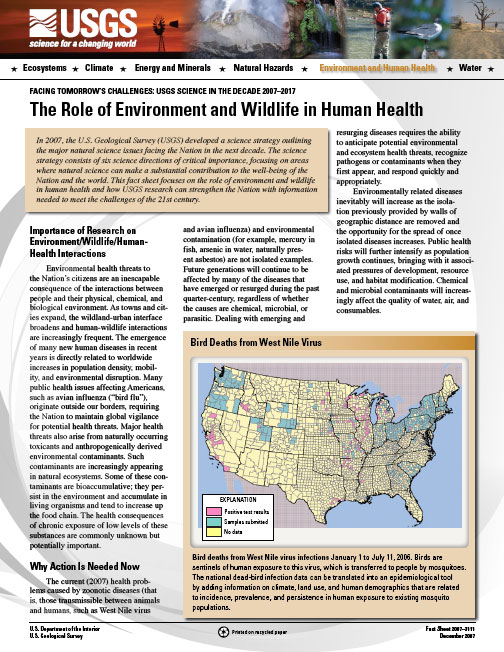Facing Tomorrow's Challenges: USGS Science in the Decade 2007-2017
The Role of Environment and Wildlife in Human Health

PDF (877 KB, 2 pages) |
Environmental health threats to the Nation’s citizens are an inescapable consequence of the interactions between people and their physical, chemical, and biological environment. As towns and cities expand, the wildland-urban interface broadens and human-wildlife interactions are increasingly frequent. The emergence of many new human diseases in recent years is directly related to worldwide increases in population density, mobility, and environmental disruption. Many public health issues affecting Americans, such as avian influenza (“bird flu”), originate outside our borders, requiring the Nation to maintain global vigilance for potential health threats. Major health threats also arise from naturally occurring toxicants and anthropogenically derived environmental contaminants. Such contaminants are increasingly appearing in natural ecosystems. Some of these contaminants are bioaccumulative; they persist in the environment and accumulate in living organisms and tend to increase up the food chain. The health consequences of chronic exposure of low levels of these substances are commonly unknown but potentially important. |

